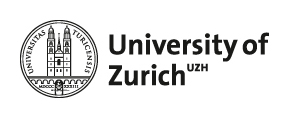Sources
Our website is heavily inspired by two groups from previous years that took this class. The website of Group 7 was used for the menu design and overall look and Group 12 was used for flipping cards.
Bibliography
[1] Buckland M, Pojani D. Green space accessibility in Europe: a comparative study of five major cities. Eur Plan Stud 2022;31:146–67. https://doi.org/10.1080/09654313.2022.2088230.
[2] Gelan E, Girma Y. Urban green infrastructure accessibility for the achievement of SDG 11 in rapidly urbanizing cities of Ethiopia. GeoJournal 2022;87:2883–902. https://doi.org/10.1007/s10708-021-10404-7.
[3] Baycan-Levent T, Nijkamp P. Planning and Management of Urban Green Spaces in Europe: Comparative Analysis. J Urban Plan Dev 2009;135:1–12. https://doi.org/10.1061/(asce)0733-9488(2009)135:1(1).
[4] Castellari S, Kurnik B. Climate change, impacts and vulnerability in Europe 2016. 2017.
[5] Dempsey N, Brown C, Bramley G. The key to sustainable urban development in UK cities? The influence of density on social sustainability. Prog Plann 2012;77:89–141. https://doi.org/10.1016/j.progress.2012.01.001.
[6] Fuller RA, Gaston KJ. The scaling of green space coverage in European cities. Biol Lett 2009;5:352–5. https://doi.org/10.1098/rsbl.2009.0010.
[7] United Nations. The sustainable development goals report 2022. 2022.
[8] Sharifi F, Nygaard A, Stone WM, Levin I. Accessing green space in Melbourne: Measuring inequity and household mobility. Landsc Urban Plan 2021;207:104004. https://doi.org/10.1016/j.landurbplan.2020.104004.
[9] Venkataramanan V, Packman AI, Peters DR, Lopez D, McCuskey DJ, McDonald RI, et al. A systematic review of the human health and social well-being outcomes of green infrastructure for stormwater and flood management. J Environ Manage 2019;246:868–80. https://doi.org/10.1016/j.jenvman.2019.05.028.
[10] Wolch JR, Byrne J, Newell JP. Urban green space, public health, and environmental justice: The challenge of making cities “just green enough.” Landsc Urban Plan 2014;125:234–44. https://doi.org/10.1016/j.landurbplan.2014.01.017.
[11] Mears M, Brindley P. Measuring urban greenspace distribution equity: The importance of appropriate methodological approaches. ISPRS Int J Geo-Information 2019;8. https://doi.org/10.3390/ijgi8060286.
[12] Bertram C, Rehdanz K. The role of urban green space for human well-being. Ecol Econ 2015;120:139–52. https://doi.org/10.1016/j.ecolecon.2015.10.013.
[13] Stessens P, Khan AZ, Huysmans M, Canters F. Analysing urban green space accessibility and quality: A GIS-based model as spatial decision support for urban ecosystem services in Brussels. Ecosyst Serv 2017;28:328–40. https://doi.org/10.1016/j.ecoser.2017.10.016.
[14] Baycan- Levent T, Peter N. Critical success factors in planning and management of urban green spaces in Europe. Sustain Soc 2012;4:209–25.
[15] Nadin V, Hawkes P, Cooper S, Shaw D, Westlake T. Regional devlopment studies: The EU compendium of spatial planning systems and policies 1997:176.
[16] Rusche K, Reimer M, Stichmann R. Mapping and Assessing Green Infrastructure Connectivity in European City Regions 2019. https://doi.org/10.3390/su11061819.
[17] Kronenberg J, Haase A, Łaszkiewicz E, Antal A, Baravikova A, Biernacka M, et al. Environmental justice in the context of urban green space availability , accessibility , and attractiveness in postsocialist cities. Cities 2020;106:102862. https://doi.org/10.1016/j.cities.2020.102862.
[18] Xiu N, Ignatieva M, Bosch CK Van Den, Chai Y. A socio-ecological perspective of urban green networks : the Stockholm case 2017:729–42. https://doi.org/10.1007/s11252-017-0648-3.
[19] Kabisch N, Haase D. Landscape and Urban Planning Green spaces of European cities revisited for 1990 – 2006. Landsc Urban Plan 2013;110:113–22. https://doi.org/10.1016/j.landurbplan.2012.10.017.
[20] Kabisch N, Strohbach M, Haase D, Kronenberg J. Urban green space availability in European cities. Ecol Indic 2016;70:586–96. https://doi.org/10.1016/j.ecolind.2016.02.029.
[21] Jörg R, Lenz N, Wetz S, Widmer M. Ein Modell zur Analyse der Versorgungsdichte: Herleitung eines Index zur räumlichen Zugänglichkeit mithilfe von GIS und Fallstudiezur ambulanten Grundversorgung in der Schweiz. 2019.
[22] Vale DS, Pereira M. The influence of the impedance function on gravity-based pedestrian accessibility measures: A comparative analysis. Environ Plan B Urban Anal City Sci 2017;44:740–63. https://doi.org/10.1177/0265813516641685.
[23] Grün Stadt Zürich. Die Freiraumversorgung der Stadt Zürich und ihre Berechnung: Methodenbeschrieb und Anwendung 2019:57.
[24] Boeing G. OSMnx: New methods for acquiring, constructing, analyzing, and visualizing complex street networks. Comput Environ Urban Syst 2017;65:126–39. https://doi.org/10.1016/j.compenvurbsys.2017.05.004.
[25] Bondarenko, Maksym, Kerr, David, Sorichetta, Alessandro and Tatem A. Census/projection-disaggregated gridded population datasets, adjusted to match the corresponding UNPD 2020 estimates, for 183 countries in 2020 using Built-Settlement Growth Model (BSGM) outputs. Univ Southampt 2020. https://doi.org/10.5258/SOTON/WP00685.
[26] Cui N, Malleson N, Houlden V, Comber A. Using vgi and social media data to understand urban green space: a narrative literature review. ISPRS Int J Geo-Information 2021;10. https://doi.org/10.3390/IJGI10070425.
